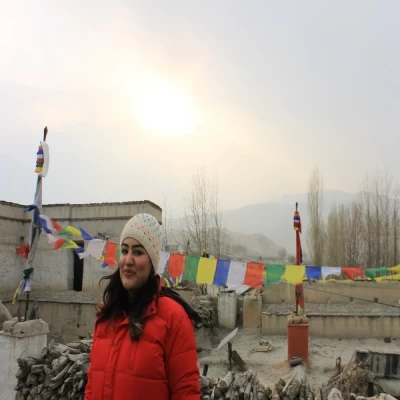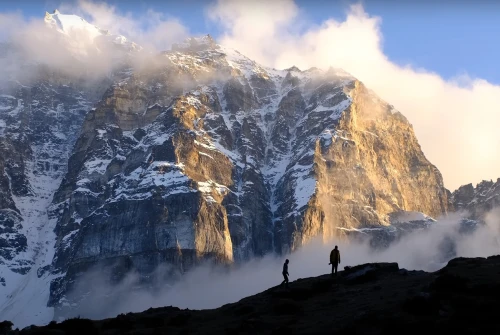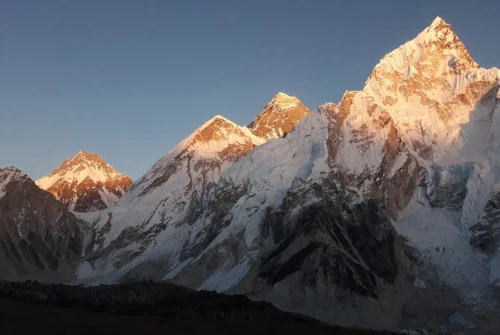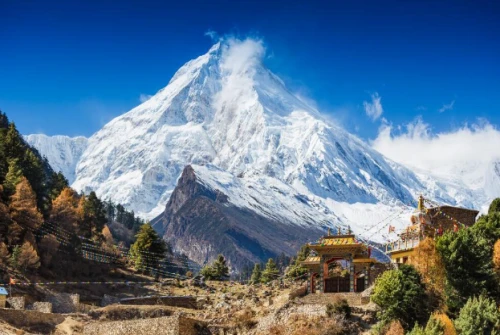Have you ever dreamed of trekking in a remote, less-crowded Himalayan trail that still offers jaw-dropping views, cultural immersion, and real adventure? That’s exactly what the Manaslu Circuit Trek offers. But wait, before you pack your bags and lace up your hiking boots, it’s essential to understand what you’re signing up for.
So, how hard is the Manaslu Trek? Is altitude sickness a big concern? And what’s the best way to prepare for it? Let’s dive into all things Manaslu Trek difficulty, altitude sickness, and preparation, told in plain English with zero fluff.
Overview of the Manaslu Circuit Trek
The Manaslu Circuit Trek circles Mount Manaslu (8,163m), the eighth-highest mountain in the world. Located in western Nepal, this 14- to 18-day trek showcases untouched beauty, Buddhist monasteries, waterfalls, suspension bridges, and the thrill of crossing the Larke La Pass (5,160m).
It’s often dubbed a “quieter alternative to the Annapurna Circuit,” but don’t be fooled, it’s just as adventurous, if not more.
How Hard is Manaslu Trek?
Let’s not sugarcoat it, Manaslu is a challenging trek. But difficult doesn’t mean impossible. Think of it like climbing a steep staircase for several hours a day while soaking in majestic views. If you’re reasonably fit, mentally prepared, and have done your homework, you can conquer it.
Manaslu Trek Difficulty: Key Factors
Here are some factors that influence the Manaslu Trek difficulty:
High Altitude: You’ll spend days above 3,500 meters.
Trek Duration: It lasts around 14–18 days, depending on the itinerary.
Remote Terrain: Trails are rugged, and facilities are basic. Weather: Cold nights and unpredictable weather near the pass. The best time for the Manaslu Circuit Trek is considered March-May and September-December.
Physical Fitness: Daily treks can last 6–8 hours.
Analogy: Think of it like running a marathon in slow motion, your body needs stamina, your lungs need space, and your mind needs patience.
Typical Itinerary and Challenges by Day
Here’s a brief of what each section might feel like:
Day 1–5: Gradual ascent through Gurung and Tibetan villages. Moderate hiking.
Day 6–10: Higher altitude begins; breathing gets tougher.
Day 11–13: Climbing towards Larke La Pass. This is the toughest stretch.
Day 14+: Descent easier on the lungs, harder on the knees.
Every day brings new landscapes and new challenges, making it a mentally and physically dynamic journey.
Manaslu Circuit Trek Altitude Profile
You’ll start at around 700m (Soti Khola) and gradually ascend to 5,160m at Larke La Pass. Here’s a simplified profile:
Soti Khola (710m)
Namrung (2,630m)
Samagaun (3,530m) – key acclimatization spot
Dharamsala (4,460m)
Larke La Pass (5,160m) – the peak point
The gradual climb helps with acclimatization, but you must still be cautious.
Manaslu Trek Altitude Problems: What to Expect
Altitude problems don’t play favorites. Anyone, even the fittest hiker, can feel the effects.
Common issues include:
Shortness of breath
Headache
Loss of appetite
Dizziness
Fatigue
These are the early signs of Acute Mountain Sickness (AMS). Ignoring them can lead to serious complications like HAPE or HACE.
Understanding Altitude Sickness on the Manaslu Circuit
Manaslu Circuit Trek altitude sickness is common due to its gradual but high ascent. The air gets thinner as you rise, meaning less oxygen for your body to function. Symptoms usually appear above 2,500m.
Tips to prevent it:
Ascend slowly
Take acclimatization days seriously
Stay hydrated
Avoid alcohol
Know your limits
Manaslu Circuit Trek Acclimatization Tips
Acclimatization is your body’s way of saying, “I need a break to catch up.”
Smart strategies:
Spend two nights in Samagaun or Samdo.
Hike high during the day, sleep low.
Include acclimatization hikes to places like Manaslu Base Camp.
Pro tip: Don’t skip acclimatization days. They can be the difference between a safe trek and a medical evacuation.
Is Manaslu Trek Difficult for Beginners?
It’s not ideal for absolute beginners, but if you’re someone who’s done moderate treks (like Ghorepani or Langtang), then with training, Manaslu is within your reach.
Beginner checklist:
Can you walk 6–8 hours for consecutive days?
Are you comfortable with basic tea house accommodation?
Can you handle cold weather?
If you nodded “yes” to most, then yes, the Manaslu Trek is not too difficult for you.
Manaslu Trek Preparation Guide: Physical Training
Let’s get real, your body needs to be your best buddy on this trek. Here’s a Manaslu Trek preparation guide for fitness:
Cardio: Jogging, swimming, cycling 3–5x a week
Strength training: Legs, core, and back
Stair climbing: Mimics uphill trekking
Day hikes with a backpack: To simulate real conditions
Start at least 2–3 months in advance for the best results.
What to Pack: Gear and Essentials
Pack smart, pack light, but don’t forget the essentials:
Sleeping bag (rated to -10°C or lower)
Down jacket & warm layers
Water purification tablets
First aid kit (with altitude meds)
Trekking poles
Headlamp
Proper hiking boots
Avoid overpacking. Your backpack should weigh no more than 10–12kg.
Preparing for High Altitude Trekking Nepal Style
Preparing for high-altitude trekking Nepal style means blending training, gear, mindset, and respect for the mountains.
Bonus tips:
Go slow and steady
Respect local culture and customs
Always check the weather forecast
Trek with a guide or a reputable agency for safety
Nutrition and Hydration Tips
Fueling your body right is crucial.
Drink at least 3–4 liters of water daily
Eat carb-rich meals like rice, pasta, and potatoes
Carry energy bars, nuts, and ORS packets
Avoid alcohol and smoking
Think of your body as an engine; it needs the right fuel to keep running, especially above 3,000 meters.
Mental Preparation: The Mind Game of Trekking
Your legs carry you, but your mind drives you. You’ll face moments when you're tired, cold, or frustrated. Here’s how to stay mentally strong:
Visualize your goal
Take it one day at a time
Celebrate small wins
Embrace the discomfort—it’s part of the adventure
As they say, “The best views come after the hardest climbs.”
Conclusion & Final Thoughts
So, is Manaslu Trek difficult? Yes, but in the most rewarding way possible. It challenges you, transforms you, and gifts you with memories of a lifetime. If you respect the altitude, prepare thoroughly, and approach the journey with the right attitude, it will be one of the most meaningful experiences of your life. If this guide helped you understand the Manaslu Trek difficulty, altitude sickness, and how to prepare, share it with a fellow trekker or start planning your adventure today with us. The mountains are calling!




